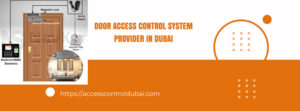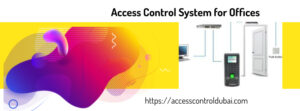Access Control Is the Most Efficient

Which Type of Access Control Is the Most Efficient? 5 Models Compared
When it comes to securing your organization’s assets, the question of which type of access control is the most efficient is crucial. Let’s dive into the world of access control systems and explore the top contenders for the title of most efficient.
Role-Based Access Control (RBAC): The Organizational Powerhouse
RBAC stands out as one of the most efficient types of access control for many organizations. This model assigns permissions based on a user’s role within the company, streamlining access management significantly. Imagine a large corporation where new employees join regularly. With RBAC, IT administrators can simply assign the “Marketing Intern” role to a new hire, instantly granting them access to all necessary resources without individually configuring permissions.
This efficiency in user management makes RBAC a top contender for the most efficient access control type.
Attribute-Based Access Control (ABAC): The Flexible Dynamo
ABM well define about attribute access control system in details
ABAC takes efficiency to the next level by considering multiple attributes when granting access. This model uses metrics about users or assets to determine access levels, offering unparalleled flexibility.
Picture a scenario where access needs to be restricted based on time, location, and device type. ABAC can handle this complex requirement effortlessly, making it highly efficient for organizations with diverse and dynamic access needs.
Mandatory Access Control (MAC): The Security essential in Dubai
User-Friendly Interface Advanced access control system in Dubai
When it comes to high-security environments, MAC is often considered the most efficient type of access control system Dubai. This model places all access decisions in the hands of system administrators, creating a robust security layer. In government agencies dealing with classified information, MAC’s efficiency lies in its ability to maintain strict confidentiality without the need for constant manual oversight.
Discretionary Access Control (DAC): The Flexible Friend
DAC offers a different kind of efficiency, particularly for smaller organizations or those with rapidly changing access needs. This model allows resource owners to set access rights for users, providing flexibility and quick adaptability. Consider a startup where roles and responsibilities shift frequently. DAC’s efficiency shines in its ability to quickly adjust access permissions without going through a centralized authority.
Rule-Based Access Control: The Contextual Genius
Rule-based access control brings efficiency through its ability to adapt to specific contexts. This fingerprint biometric system grants access based on predefined rules and policies, offering dynamic control. Imagine an office where certain areas should only be accessible during business hours. Rule-based access control efficiently manages this requirement without the need for daily manual adjustments.
The Verdict: Which Type of Access Control Is the Most Efficient?
After examining these models, it’s clear that the most efficient type of access control depends on your organization’s specific needs. However, Role-Based Access Control (RBAC) often emerges as the most efficient for many organizations due to its balance of security, ease of management, and scalability. RBAC’s efficiency lies in its ability to simplify access management in large organizations while maintaining robust security.
It reduces administrative workload, minimizes the risk of access-related errors, and adapts well to organizational changes. That said, the most efficient access control type for your organization might be a hybrid approach.
Which Type of Biometric Door Access Control is the Most Efficient?
Customized Biometric access control system in Dubai
Many biometric type of access control is the best available efficient? It’s a question that often pops up in discussions about cybersecurity. The answer, however, isn’t straightforward. It depends on a variety of factors, including the specific needs of your organization, the sensitivity of your data, and the level of security you require.
Let’s dive into the world of access control and explore the most efficient options:
Understanding Access Control
Before we delve into the specifics, let’s clarify what access control is. In simple terms, it’s a security mechanism that regulates who can access specific resources. These resources can be anything from files and databases to physical locations and network systems.
The Main Types of Access Control
There are primarily four types of access control:
Discretionary Access Control (DAC):
How it works: In DAC, the owner of a resource determines who can access it.
Real-world analogy: Think of a homeowner who decides who gets a key to their house.
Best for: Smaller organizations with less complex security needs.
Mandatory Access Control (MAC): Dubai
How it works: A central authority defines access permissions based on security labels assigned to users and resources.
Real-world analogy: Imagine a government agency where security clearances dictate who can access classified information.
Best for: Highly secure environments like military or government organizations.
Role-Based Access Control (RBAC):
How it works: Access permissions are assigned to roles, and users are assigned to roles.
Real-world analogy: Consider a company where employees have different roles (e.g., manager, developer, accountant and each role has specific access privileges.
Best for: Large organizations with complex hierarchies and many users.
Attribute-Based Access Control (ABAC):
How it works: Access decisions are made based on attributes of the user, resource, and environment.
Real-world analogy: Imagine a library where access to certain books is restricted based on the user’s age, membership status, and the book’s subject matter.
Best for: Dynamic environments where access needs change frequently
Which Type is Most Efficient?
The most efficient type of access control depends on your specific needs. However, in general, RBAC is often considered the most efficient for many organizations. It offers a good balance between security and flexibility, and it’s relatively easy to manage.
Key Factors to Consider Access & Attendance APP in UAE businesses.
Security Needs: How sensitive is your APP data? What level of security do you require?
Scalability: Can the system handle growth and change?
Complexity: How complex is your organization’s structure?
User Experience: How easy is it for users to access the resources they need?
Cost: What is the cost of implementation and maintenance?
FAQs: Access Control Dubai
Q: Can I use multiple types of access control together?
A: Yes, many organizations use a combination of access control methods to achieve optimal security. For example, you might use RBAC for general user access and MAC for highly sensitive data.
Access control security for Dubai enterprises
Basic Access Control Fingerprint with attendance reporting .
Q: How often should I review my access control policies?
A: It’s recommended to review and update your access control policies regularly, especially when there are changes in your organization, such as new employees, new systems, or new security threats.
Understanding Access control system providers in Dubai
Q: What are some common access control best practices?
A: Some best practices include: Least Privilege Principle: Grant users only the minimum level of access they need to perform their job duties.
Access control system maintenance Dubai
Regular Access Reviews: Periodically review user access permissions to ensure they are still appropriate.
Strong Password Policies: Generally admin enforce solid password rules to protect user PIN accounts.
Access control solutions Dubai
Multi-Factor Authentication (MFA): Use MFA to add an extra layer of security to user logins. Security Awareness Training: Educate users about security best practices to prevent unauthorized access.
By carefully considering these factors and implementing the most suitable access control methods, you can significantly enhance your organization’s security posture.
Conclusion Access control system integration Dubai
Conclusion:
Many modern systems combine elements of different models to create a tailored, highly efficient access control solution. Remember, the most efficient access control system is one that meets your security needs while minimizing administrative overhead and user friction. As you evaluate which type of access control is the most efficient for your organization, consider factors like your company size, industry regulations, and the sensitivity of your data. The right choice will enhance your security posture while supporting, not hindering, your operational efficiency.
Access Control System Dubai
Welcome to Access Control System Dubai, your trusted source for comprehensive security solutions.
Recent Post
Our Contact Details
- ACS Dubai
- +971 56 131 3980
- info@accesscontroldubai.com
- 31 7B St Al Hamriya - Dubai



